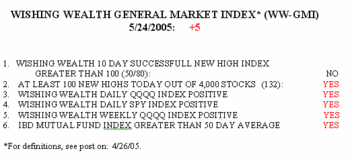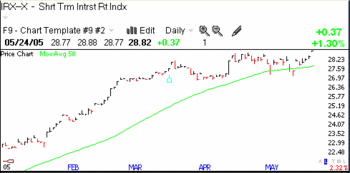"It means, as I see it, that the corporation gets the money it needs, absolutely free and clear of any obligation to repay it–ever. The underwriters get their cut or commission (or both) for placing the stock issue. The stockbrokers who handle all subsequent transactions in the stock get their commission. And the public will get "shares" (i.e., chips) with which to gamble–the gamble being, of course, that someone else will pay you a profit on them in the hope of selling them to a third person for a little bit more , and so on in an endless cycle of speculation. This is, in essence, the entire story of the stock market, as I have found it."
Nicolas Darvas, Wall Street: The Other Las Vegas, Kensington Publishing, 1964, p. 54-55.
I read Darvas’ books in the 1960’s and they had and continue to have a profound impact on my approach to the market. I know that William O’Neil and some of his colleagues have also referred to Darvas’ influence on their trading strategies. Here is a man, Darvas, who made almost 2 million dollars in the stock market in 18 months while he danced around the world, subsequently saying that the stock market was just a venue for gambling.
After the internet bubble and the tech stocks collapsed so badly in 2000-02, I think many of the people who were so badly burned, would agree with Darvas. Nevertheless, there persists an entire industry of people who attempt to make the market seem rational and spend lots of time analyzing the "true value" of stocks. What if Darvas is right? All of these people and institutions who are paid millions of dollars for their financial advice are simply involved in a world of fabricated fantasy. If Darvas is right, the idea of having people trusting their economic futures (and social security) to the whims of the great stock market casino terrifies me. As Darvas says at the end his book, "I walk into the Casino with my eyes open as I would if I were walking into a Casino in Las Vegas. I ignore the chatter, I watch the action; and, I try my luck." I believe that this is our mission as market technicians. ……………………………………….
The GMI held at +5 today. The market has weakened some,  however, with only 132 new 52 week highs, down from 197 new highs on 5/18. There were 28 new lows in my universe of almost 4,000 stocks. Successful 10 day new highs were 50 today, down from 84 on 5/19. Only 46% of the Nasdaq 100 stocks rose today, 41% of the S&P 500 stocks and 43% of the Dow 30. Put another way, the majority of the stocks in these indexes declined or were unchanged today. This rally may be taking a breather. Note that the GMI is explained in my post on 4/26.
however, with only 132 new 52 week highs, down from 197 new highs on 5/18. There were 28 new lows in my universe of almost 4,000 stocks. Successful 10 day new highs were 50 today, down from 84 on 5/19. Only 46% of the Nasdaq 100 stocks rose today, 41% of the S&P 500 stocks and 43% of the Dow 30. Put another way, the majority of the stocks in these indexes declined or were unchanged today. This rally may be taking a breather. Note that the GMI is explained in my post on 4/26.
As long as the GMI stays at +5, I feel comfortable holding stocks and buying stocks that bounce off of support levels. I am not as confident of buying new highs right now, however. Some of my stocks hit new highs today but closed near their lows of the day (GOOG, BOOM).
There is one big negative that I see. The short term interest rate index went to a new high today (click on figure to enlarge). Speculators are again betting on more Fed rate hikes and this could eventually torpedo the market. If it does, the weakness will show up in the GMI. Nevertheless, the resumption of the rise in this index just makes me a little more cautious about the possible longevity of this bull move…………………………………………….
rate index went to a new high today (click on figure to enlarge). Speculators are again betting on more Fed rate hikes and this could eventually torpedo the market. If it does, the weakness will show up in the GMI. Nevertheless, the resumption of the rise in this index just makes me a little more cautious about the possible longevity of this bull move…………………………………………….
I am introducing today another indicator I find useful. I simply count the days since the current trend began. Today is day 13 of the rally, as I define its inception. I will use the term U-13 (for today’s count) to designate the duration of an uptrend. A downtrend will be indicated by D-xxx. This indicator will help us to monitor the maturity of a trend. At some point I will show you an analysis I did of the duration of up and down trends over the past few years. It helps me to determine how likely it is that a trend will continue. In future posts I will include this trend count in the GMI indicator box.
Send me your feedback at silentknight@wishingwealthblog.com
Please remember that the stock market is a risky place, especially now. I am not providing recommendations for you to follow. My goal is to share tools and methods that I have used over the past 40 years of trading, so that you may learn from them and adapt them to your trading style and needs. While I do my best, I do not guarantee the accuracy of any statistics computed or any resources linked to my blog. Please consult with your financial adviser and a mental health practitioner before you enter the stock market, and please do not take unaffordable risks in the current market environment. See the About section for more statements designed to protect you (and me) as you navigate this market. Past performance does not guarantee future results, but I would rather learn from a former winner than a loser.